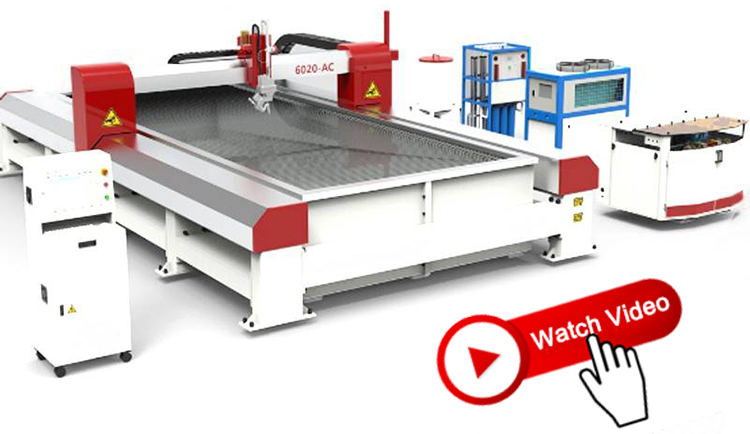Industry-news
How Does a Waterjet Work?
How Does a Waterjet Work?
Waterjet cutting is a modern manufacturing process that uses a high-pressure stream of water to cut through various materials. This technology offers a precise and efficient alternative to traditional cutting methods, providing clean cuts without the need for heat. Here’s an in-depth look at how waterjet cutting works and why it is favored by many industries.
At the heart of the waterjet cutting process is a high-pressure pump that compresses water to extremely high pressures—often reaching up to 60,000 psi or more. The pressurized water is then forced through a small-diameter nozzle, creating a narrow and powerful jet. This concentrated stream of water is capable of cutting through materials such as metal, stone, glass, and composites with remarkable precision.
For tougher materials, the waterjet system can be enhanced by adding an abrasive material to the water stream. Abrasives like garnet are mixed into the high-pressure water just before it exits the nozzle. This combination of water and abrasive particles increases the cutting power, making it possible to slice through harder substances such as ceramics and thick metals without causing any thermal damage. The process is known as abrasive waterjet cutting, and it is particularly valued for its ability to maintain the structural integrity of the workpiece.
One of the main advantages of waterjet cutting is its “cold cutting” nature. Unlike laser or plasma cutting, which use heat to make cuts, waterjet cutting operates at room temperature. This eliminates the risk of heat-affected zones (HAZ) where the material properties might be altered due to high temperatures. As a result, the original strength and appearance of the material remain intact.
Another benefit is the precision of the process. Waterjet Machines are controlled by computer numerical control (CNC) systems that direct the cutting head with high accuracy. This precision allows for very tight tolerances, often reaching as fine as 0.005 inches, and enables the creation of intricate and complex designs. The narrow kerf width of a waterjet—typically between 0.01 and 0.04 inches—means that there is minimal material loss during the cutting process.
Waterjet cutting is also environmentally friendly. The process does not produce harmful fumes or residual heat, and the water used can often be recycled through a filtration system. This not only reduces waste but also lowers overall energy consumption compared to other cutting methods.
In summary, waterjet cutting works by using a high-pressure water stream—enhanced with abrasives when necessary—to deliver clean, precise cuts on a wide variety of materials. Its cold cutting process prevents heat-related distortions, and its high precision makes it suitable for both simple and complex designs. The ability to cut multiple materials without compromising their integrity has made waterjet cutting an essential tool in industries ranging from aerospace and automotive to stone fabrication and electronics.
Waterjet cutting continues to grow in popularity due to its versatility, precision, and eco-friendly nature. Whether for high-volume industrial applications or custom designs, the waterjet technology provides a reliable solution that meets modern manufacturing demands. Explore waterjet cutting to discover a cleaner, more precise, and efficient method of material processing.






